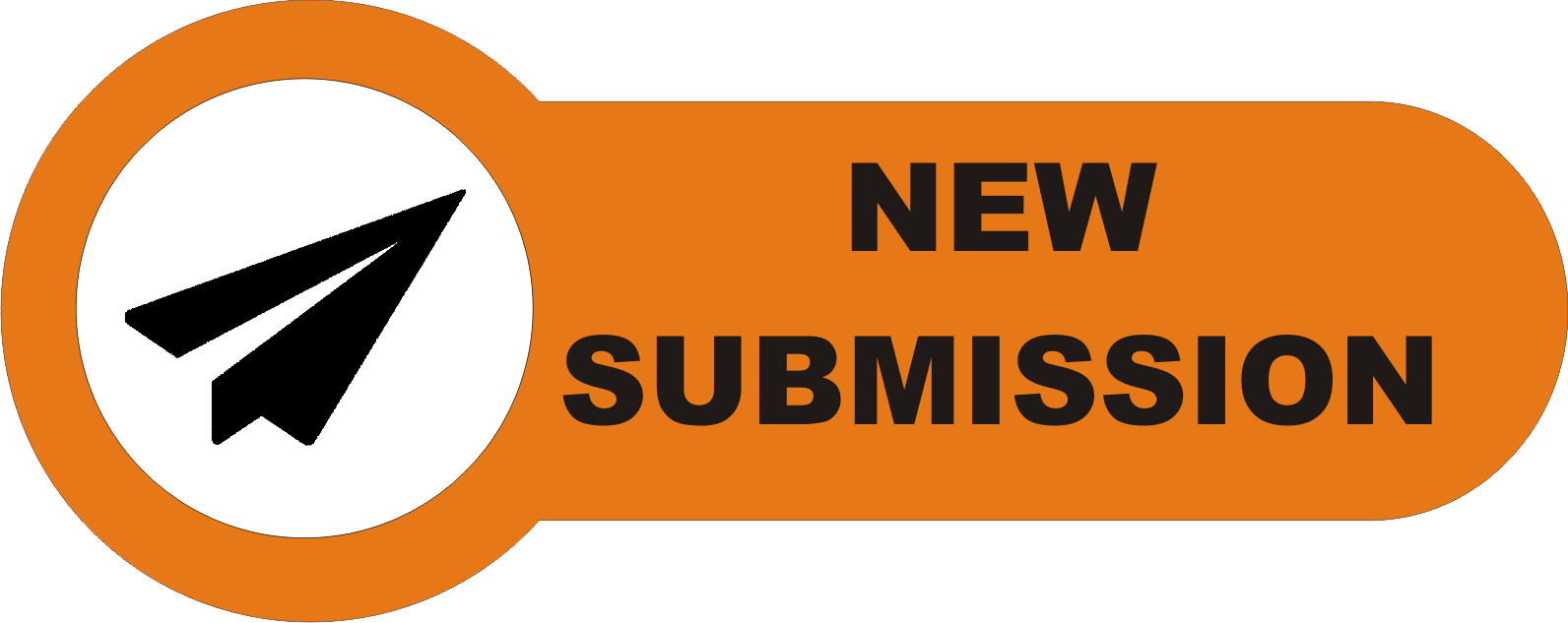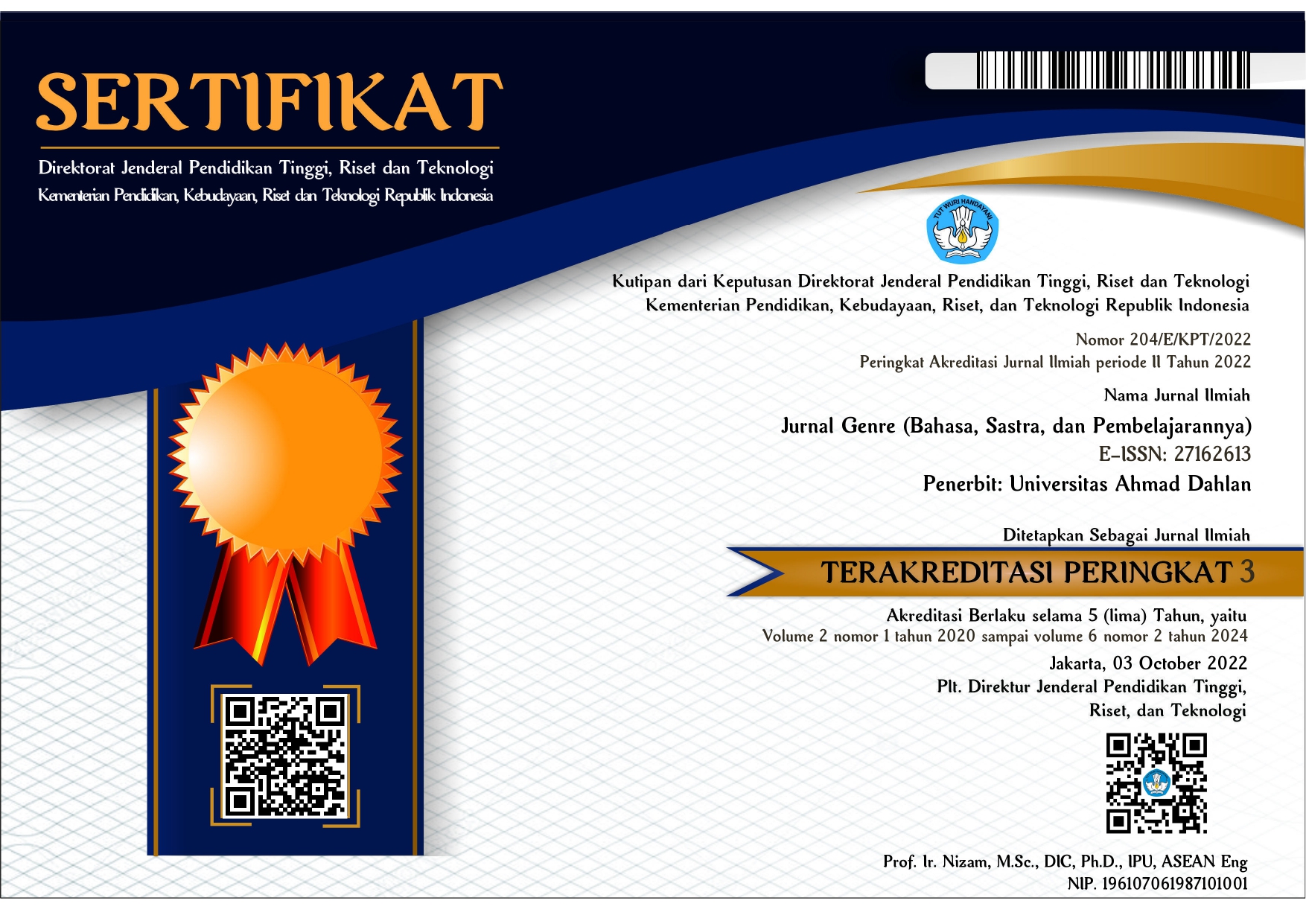Pemerolehan bahasa anak berkebutuhan khusus (tunarungu) dalam memahami bahasa
DOI:
https://doi.org/10.26555/jg.v2i1.2051Keywords:
Acquisition of language Child language, Hearing impairmentAbstract
Children with hearing impairment are children with hearing loss who are classified into deaf and hard of hearing. The direct impact of disability is the obstruction of verbal / verbal communication, both speaking (expressive) and understanding the conversations of others (receptive). Obtaining the first language of a deaf child can be done with total communication. Total communication is the most effective communication system because in addition to using a form of communication orally or called oral, the activity of reading, writing, reading utterances, is also equipped with a form of cues. The purpose of this study was to determine the acquisition of language of children with special needs (deaf) in understanding language. Subjects in this study are children with special needs who experience speech impairment (hearing impairment) while the object of this study is focused on only one child, Mila Erdita, a 15-year-old child. This research refers to case studies with descriptive research type. Data collection techniques in this study will be done in three ways, namely; observation techniques, interview techniques, and documentation techniques. In this research, data processing that will be done is to describe the speech data of deaf children to see the acquisition of children's vocabulary. The results of this study indicate that deaf children can obtain a language of total communication using a form of communication orally or called oral, with the activities of reading, writing, reading utterances, also equipped with signs
References
Chaer, A. (2003). Psikolinguistik Kajian Teoritik. Jakarta: PT Reneka Cipta.
Christine J.2016. Pemerolehan Bahasa Anak Tunarungu. PAUD PPs UNJ. Vol. 3(2).
Desy, Y. 2009. Pemerolehan Bahasa Indonesia Anak Tunarungu Usia 7-10 Studi Kasus Pada Tini dan Viki). Skripsi Jurusan Pendidikan Bahasa dan Sastra Indonesia. Universitas Muhammadiyah Surakarta. Surakarta.
Gunawan, D. 2016. Modul Guru Pembelajaran SLB Tunarungu . Bandung. PPPPTK TK DAN PLB.
Hernawati, Tati. 2007. Pengembangan Kemampuan Berbahasa dan Berbicara Anak Tunarungu. Jurnal Jurusan PLB FIP Universitas Pendidikan Indonesia. Vol.7. (1). pp. 101110.
Kuntarto, E, dkk. (2017). Dasar-dasar Psikolinguistik Naskah Hibah Buku Nasional. Direktorat Sumber Daya Manusia Kementrian Riset, Teknologi, dan Pendidikan Tinggi.
Noviantari. 2010. Panduan Pelaksanaan Komunikasi Total Bagi Orang Dengan Kecacatan Rungu Wicara. Direktorat Rehabilitasi Sosial Orang Dengan Kecacatan Kementerian Sosial Republik Indonesia.
Siswomartono S. 2007. Cara Mudah Belajar SIBI (Sistem Isyarat Bahasa Indonesia). Federasi Nasional untuk Kesejahteraan Tunarungu Indonesia (FNKTRI). Jakarta.
Winarsih, M. 2010. Pembelajaran Bahasa Bagi Anak Tunarungu. Perspektif Ilmu Pendidikan - Vol.22 Th. XIII
Widia, Y. Pemerolehan kosa pemerolehan kosa kata anak tunarungu berdasarkan kelas kata bahasa Indonesia di SDLB Karya mulia II Surabaya; Kajian Psikoliguistik. Skriptorium, Vol. 1(2).
Downloads
Published
Issue
Section
License

This work is licensed under a Creative Commons Attribution-ShareAlike 4.0 International License.











